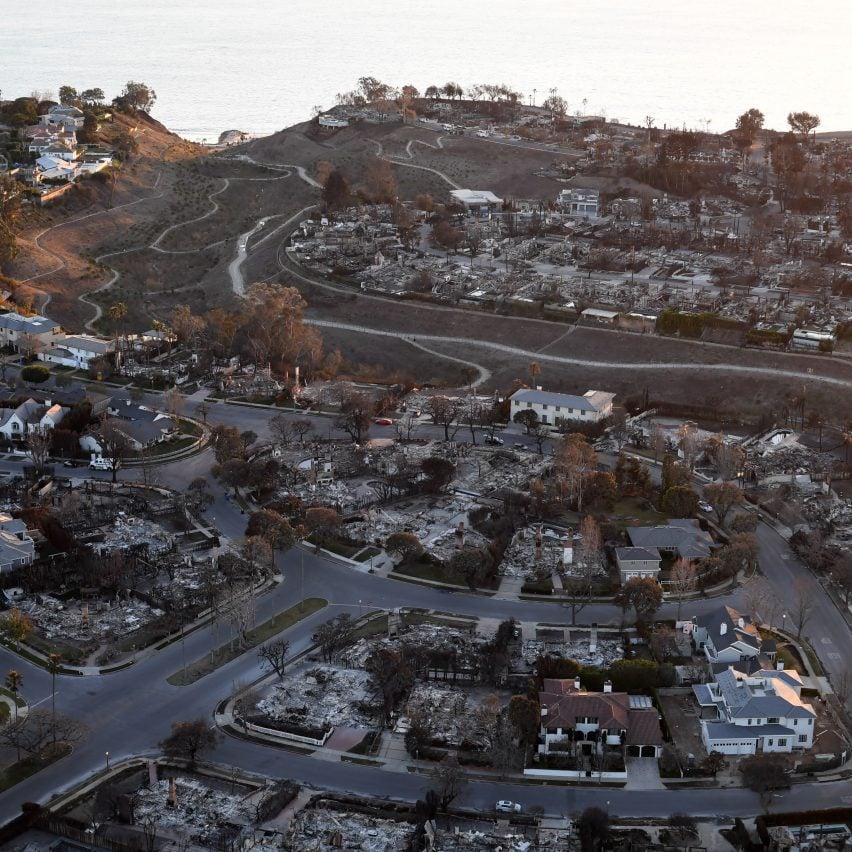State laws in California are worsening the housing crisis and will make recovering from the Los Angeles wildfires more difficult, writes Andrew Thompson.
Over a generation, California’s state and local governments have failed to adequately respond to circumstances that evolved into the state’s housing crisis of today. Consequently, it’s hard to imagine an effective recovery from the Los Angeles fires of 2025. Addressing both these crises begins with the ability to build.
For over 20 years as a Los Angeles architect, I have witnessed firsthand how we are hamstrung by flawed policy, siloed bureaucracies, opportunistic litigation and the status quo.
The destruction left by these fires is greater than anyone has experienced here in recent memory
The destruction left by these fires is greater than anyone has experienced here in recent memory. The Palisades and Eaton fires alone destroyed over 18,000 structures. Comparatively, the Woolsey fire in Malibu destroyed over 1,600. The Lahaina fire in Maui destroyed over 2,200. Significant rains in Southern California threaten mudslides and more loss after the fires.
The staggering scale of it all, combined with a justified search for answers, has mixed with the jet-fuel of social media and created its own conflagration of blame and political positioning.
Meanwhile, those of us in the design and construction industry watch what we’ve built turned to ash. We struggle to reconcile the scale of what will need to be rebuilt with what it took to get it built in the first place, and the heartbreaking void of lost homes and whole communities.
After the fires, local agencies are facing an avalanche of permit applications and political pressure to rebuild.
The way California regulates land use and building is intense compared to other states. There are good reasons for that. California’s dynamic geology and topography, sensitive ecologies, stunning beauty, rich history and varied economy all necessitate intense consideration of what, where and how we build.
The largest regulatory tools are a mix of local planning codes and various state laws, including the California Environmental Quality Act (CEQA). CEQA requires that local agencies confirm the building projects they approve will result in no significant negative environmental impacts. Projects must demonstrate this publicly with detailed reports and community hearings.
These laws work in opposition to the replenishment of our existing building stock
These 1970s-era legislations were well-intended reactions to the state’s massive development over the 20th century. The post-war economic boom had taken enough toll on California’s quality of life that there became political pressure to do something about it. Interestingly, CEQA was authorized by governor Ronald Reagan – back when Republicans offered even nominal support for environmental legislation.
The most powerful aspect of CEQA is the public review process it mandates. This review is also a reason for this well-intentioned law’s perversion.
Building projects must produce reports, called Environmental Impact Reports, that are highly technical, and the volume of information presented is rarely understood by members of the public. Add in a menagerie of local neighborhood councils and professional anti-development groups, and you have a public approval process resembling a food fight often ending in litigation.
The result has been 40 years of troubled transit projects, paralyzed planning and building departments, inadequate housing, and a thriving industry of land-use attorneys, public relations advisors and permit-expediting consultants. The monetary costs of this process are directly reflected in the astronomical cost of housing in the state.
These laws also work in opposition to the replenishment of our existing building stock. CEQA incentivizes property owners to retain existing structures over replacing them. In 1970 California, this fit with the goals of preserving California as it was.
However, most of these buildings were built before modern building code fire-prevention standards, effectively preserving tinderboxes in vulnerable areas. The effects of a warming planet have highlighted the vulnerabilities of these aging buildings.
California faces very serious crises unfolding at various speeds
Then there is the question of whether we should build in these areas in the first place. This is an interesting discussion, but one that tends to ignore economic realities. Go read sociologist Mike Davis’s 1995 essay The Case for Letting Malibu Burn. The title says it all. You’ll find Davis’ point – that perhaps Malibu shouldn’t exist – demonstrably proven for years, but no one cares.
Governor Gavin Newsom and LA mayor Karen Bass have exempted fire recovery and rebuilding efforts from CEQA and other onerous state and local regulations. These important steps should be commended. However, it also exposes the ridiculousness of the red tape being temporarily cut. This all prompts the question of why we haven’t reformed these rules to allow for better responses to the slow-moving crises as well as sudden ones.
California faces very serious crises unfolding at various speeds. We need to adapt. When you have to break the rules to make forward progress, you probably need to reform the rules.
Andrew Thompson is an architect and an associate at Marmol Radziner in Los Angeles. He is a graduate of Harvard University’s Graduate School of Design and previously worked in the office of Frank Gehry.
The photo is courtesy of the United States Army.
Dezeen In Depth
If you enjoy reading Dezeen’s interviews, opinions and features, subscribe to Dezeen In Depth. Sent on the last Friday of each month, this newsletter provides a single place to read about the design and architecture stories behind the headlines
The post "It's hard to imagine an effective recovery from the LA fires" appeared first on Dezeen.

